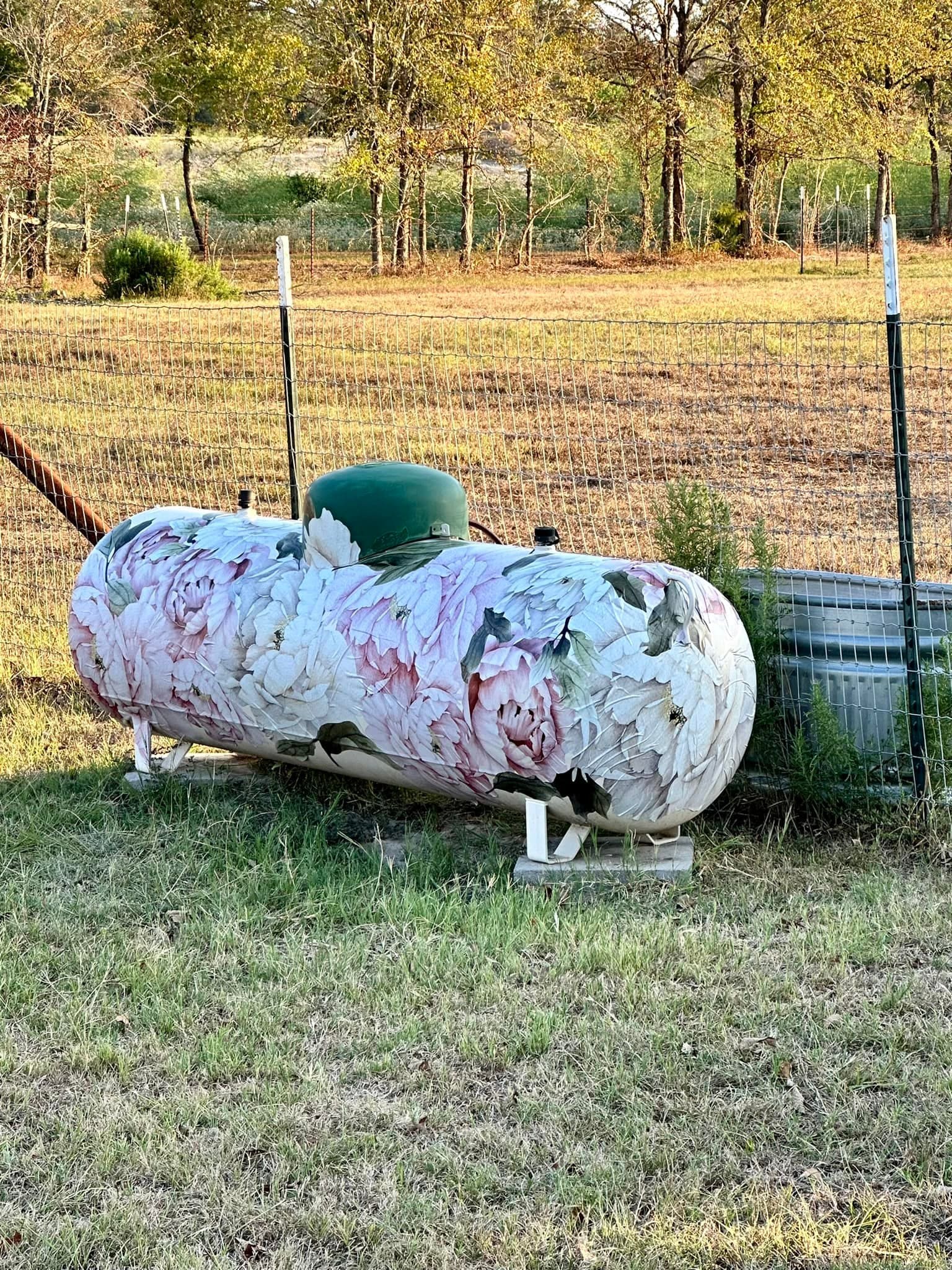
There’s something magical about taking something ordinary and making it unforgettable. This propane tank, once plain and gray, now carries the spirit of a hand-painted mural.
Big floral designs spill across its surface, brightening the entire space. It’s more than a tank, it’s a statement of creativity and care for detail.
I bet visitors will double-take, not just because of the colors, but because you’ve turned utility into art.
Materials Needed
- 1 outdoor propane tank (standard 250-500 gallon size)
- Wire brush or sander
- Outdoor primer suitable for metal surfaces (1 quart)
- Exterior acrylic or oil-based paint in floral shades (pink, green, white, cream – 8-10 oz each)
- Fine artist brushes (size 2-6)
- Wide paintbrushes or rollers
- Painter’s tape (to mask off labels or fittings)
- Clear outdoor sealant (UV-resistant, 1 quart)
Step-by-step Guide
Step 1: Scrub down your propane tank with a wire brush or sander until the surface is clean and smooth. Then wipe it down to remove dust and debris.
Step 2: Apply a coat of outdoor primer over the entire tank. This ensures your paint adheres well and lasts against the elements. Let it dry fully before moving on.
Step 3: Paint your background color (white or cream works beautifully). Use a roller or large brush for quick coverage, and give it at least 2 coats for even tone.
Step 4: Once dry, begin sketching large floral outlines with a pencil or chalk. Keep them big and flowing, think oversized petals and leaves that wrap around the tank.
Step 5: Fill in your flowers with layers of pinks, whites, and greens. You should use smaller brushes for blending shades to create depth, making each bloom look soft and real.
Step 6: Add highlights and details like tiny veins on leaves, deeper shades at the flower’s base, and light strokes for petals catching the sun.
Step 7: When satisfied, let the paint cure completely before brushing on a clear outdoor sealant. This protects your art from sun, rain, and seasonal wear.
Tips:
If you’re new to painting, try practicing flower strokes on cardboard first. Don’t aim for perfection as organic, imperfect brushstrokes often make flowers look more natural and alive.
